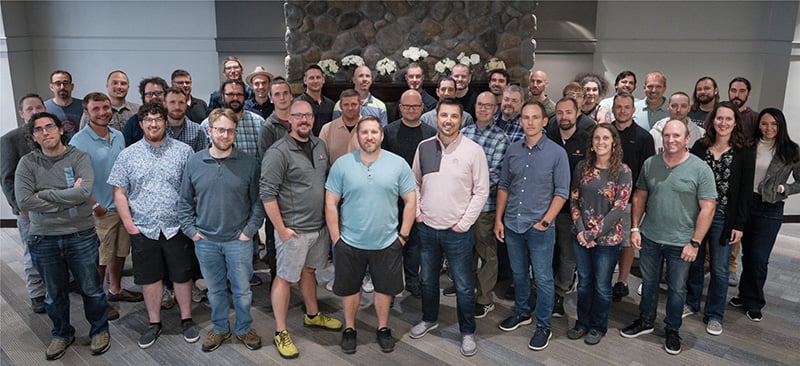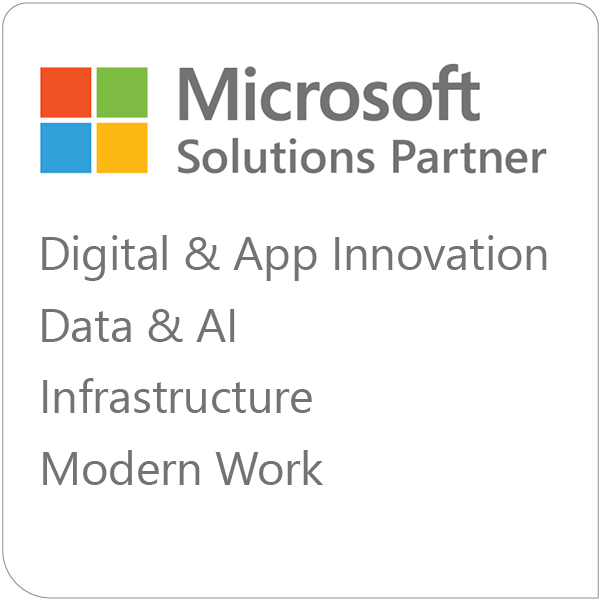By now, everyone knows about the benefits of the cloud — that’s why over 90% of businesses use cloud technology. But most haven’t completed their migrations.
The road to full cloud adoption has a number of major challenges. This blog post looks at some of the most common and what you can do to avoid them.
1. Not having a cloud transformation strategy
Businesses are eager to take advantage of the flexibility, scalability, and cost savings of the cloud. But to make the most of your cloud investment (and avoid problems down the road) you need a comprehensive cloud migration strategy.
Your cloud adoption plan should consider questions like: how much should you budget for cloud resources? Which applications should be migrated to the cloud and how should they be migrated? What are your top priorities and which systems and applications can wait? Who will be responsible for each aspect of your cloud migration and what skills do they require?
If Azure cloud is a part of your migration plan, Microsoft has a resource to help you strategize. The Microsoft Cloud Adoption Framework (CAF) for Azure provides guidance for creating and implementing a cloud strategy. It includes documents and tools for each phase of cloud adoption and can be useful to IT professionals, business leaders, and anyone else involved in cloud decision-making. You can read more about CAF here.
Even with CAF, creating an all-encompassing cloud strategy can be daunting if it’s not your area of expertise. A cloud consulting firm with extensive experience planning and implementing cloud migrations can help.
2. Skill limitations
Making the leap to cloud means that your team will be working with new technologies and new processes. Many companies simply lack the internal capacity to execute an optimal cloud migration.
Cloud transformation is about more than shifting existing workloads to a cloud provider, so if you need to bring new team members or a technology partner in, make sure their skill sets go beyond the basics. For example, a firm with software development experience help rehost, refactor, rearchitect, or even rebuild your applications to take advantage of what the cloud has to offer.
3. Getting stuck in hybrid mode
Cloud transformation is complex and can be a long process. Consequently, organizations inevitably spend some time in a hybrid environment, meaning some systems and applications are still on premises while others are in the cloud.
A hybrid environment alone isn’t a problem — in fact, it offers significant benefits. It allows your company to ease gradually into your cloud migration, leveraging the advantages of cloud technology before making a bigger investment.
However, spending too long in a hybrid cloud environment is a common cloud migration pitfall. The continued investment in on premises infrastructure is expensive and you may have incompatibilities between your legacy systems and your new cloud tech. End users will be frustrated working in multiple environments.
To learn more about the pros and cons of hybrid cloud, read this blog post.
4. Overspending
Saving money is one of the biggest benefits of cloud migration. But sometimes organizations without adequate cloud experience make costly choices.
For example, we often see organizations making the mistake of paying for separate resources for each of their databases based on their expected peak performance. Even if a database isn’t being used much, these businesses are paying for it to be in the cloud. A better choice would be to put these databases together in an elastic pool, allowing them to share resources on a single server for a set price.
For more examples of how to cut cloud costs, check out this post
5. Being unprepared for disaster
You’re embarking on your cloud journey to reap the benefits of cloud, but planning for disasters like security breaches and downtime should also be integral to your cloud strategy. Make sure that whoever is leading your cloud transformation project is knowledgeable about cloud security, disaster recovery, and cloud backup.
6. Ignoring the value of training
Employees may be averse to adopting unfamiliar technologies and workflows. IT staff will suddenly need new skills and other departments may worry about changes to their applications.
A key way to combat this problem is with information and training. Make sure the whole team is knowledgeable about the changes to come and ready to handle them. Communicate early and often about the project so that it doesn’t come as a shock to anyone.
For employees to be successful managing their cloud-based environment during and post-migration, they need to be armed with a current skillset and knowledge. This is best achieved through formal training and exams. For example, Microsoft offers a wide range of training material and certification paths.
Ultimately, the best thing you can do to avoid internal resistance is ensure that you follow cloud best practices. If you have downtime, security problems, poorly performing applications, or other issues, there’s sure to be internal resistance to the project. If everything is running smoothly, uncertainty will fade with time.
7. Finding the right cloud technology partner
As we discussed, most organizations have a skills gap when it comes to cloud migration. A great way to get expert help without the expense and hassle of hiring new employees is to work with a cloud consulting company. You can read more about cloud consulting here.
Not every cloud partner has the same level of experience or expertise. One way to evaluate this is through the certifications and designations that the company and its employees hold. For example, Microsoft offers Solutions Partners designations and Advanced Specializations to businesses that have proven their skills in specific areas. Learn more about one of Emergent Software’s advanced specializations in this blog post.
Work with us
At Emergent Software, cloud transformation is one of our core competencies. We have extensive experience helping businesses overcome the challenges listed above. Get in touch to discuss how we can make your cloud project a success.






